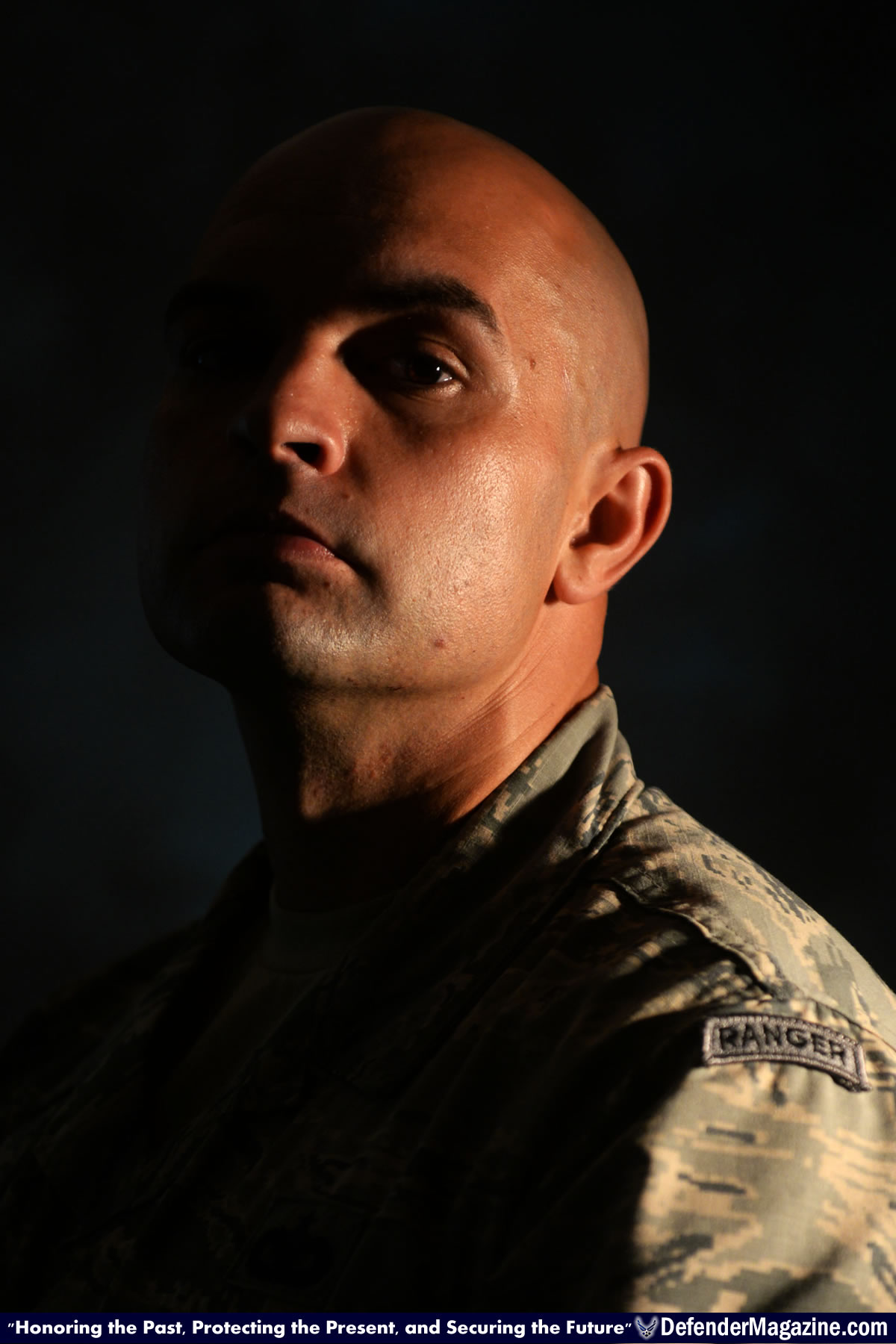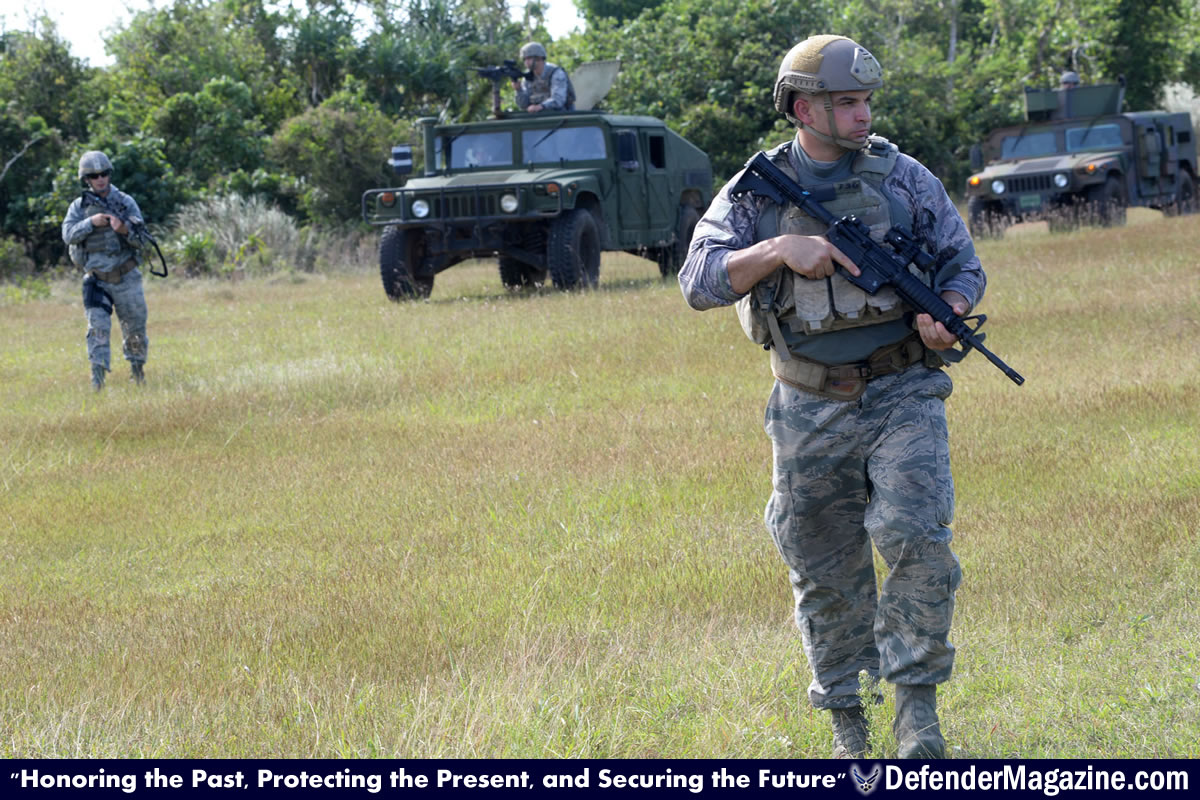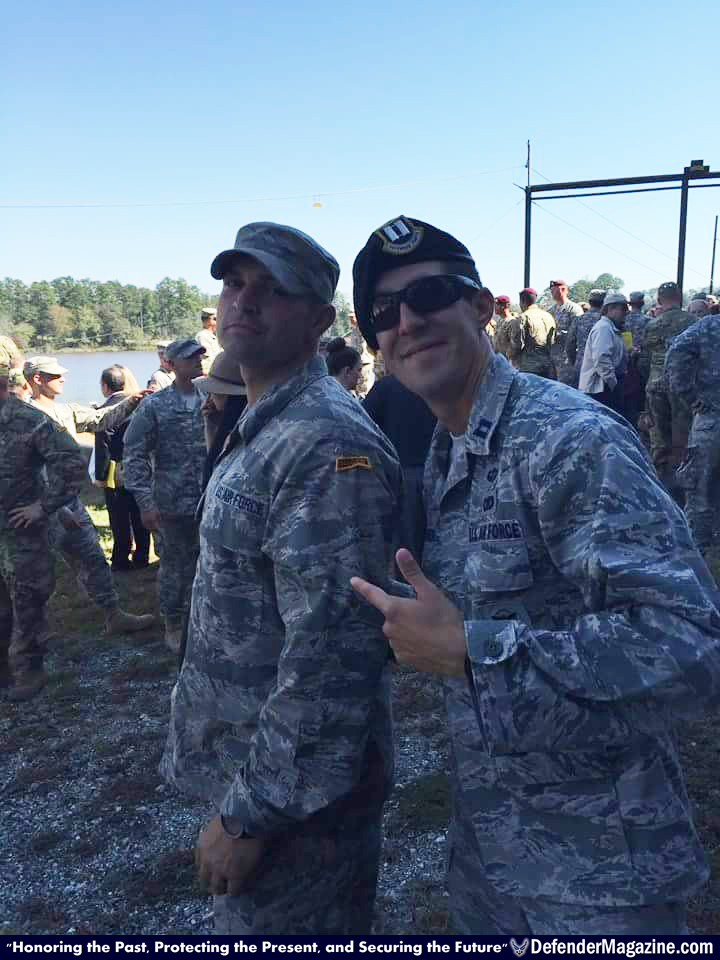
02/04/2016 – ANDERSEN AIR FORCE BASE, Guam —
Stopping for a moment to catch his breath, the Airman realized he was nearing the limit of his willpower.
He placed his rucksack on the ground for a brief moment of rest and glanced toward the mountain peak ahead. He could hear the rain dripping from the tree branches above, soaking his gear and clothes.
Exhausted, craving sleep, food and a warm bed, he played with the idea of giving up. Deep down, however, he knew this wasn’t an option. He took a deep breath, forced himself to take another step and continued with his squad up the ridge.
Staff Sgt. Robert Keefe, the 736th Security Forces Squadron NCO in charge of training, was in the middle of the U.S. Army’s Ranger School. It was his chance to prove his mettle as a combat-ready Airman among some of the military’s toughest warriors.
Rangers are uniquely skilled service members who specialize in conducting airborne and air assault operations, seizing key terrain such as airfields, destroying strategic facilities and capturing or killing enemies of the nation. Only a few Airmen are given the opportunity to attempt to join this elite brotherhood.
Located in Ft. Benning, Georgia, the school prepares volunteers in combat arms related functional skills. With a 40 percent graduation rate from 2011-15, Ranger School is one of the most grueling training courses a military member can attend.
“Ranger school is what I would consider the Department of Defense’s premier leadership course,” Keefe said. “It exists only to build the best leaders in combat for whatever branch you’re in.”
At Andersen Air Force Base, Guam, Keefe usually trains security forces Airmen to be proficient for contingency operations around the world. With 11 years of experience under his belt, the battlefield expert has sharpened his skillset with sniper training; learned how to survive and return with honor through evasion and conduct after capture training; and spent time as an investigator with a security forces unit at Ellsworth Air Force Base, South Dakota.
Preparing for Ranger School
Early 2015, while providing security support for the president, Capt. Nathaniel Lesher, Keefe’s executive officer at the time, approached him and asked if he was interested in the opportunity of becoming a Ranger.
“I selected Keefe to attend Ranger school, because it was apparent that he was both physically and mentally tough enough to finish the course,” Lesher said. “He is the guy who subordinates look up to and peers respect. Additionally, Keefe excelled at all core tasks and physical requirements in order to attend the school and with a short notice completed another physically and mentally challenging school – the Close Precision Engagement Course – earlier in the year.”
At first, the Airman shrugged it off thinking his captain was only joking. After all, only a handful of Airmen get the chance to join Army Soldiers each year.
“When he first asked me, I told him ‘Sure I’ll go if you send me,’” Keefe said. “At first I didn’t think he was serious, but he asked me again a few more times over the course of the next couple days. Then I thought that he might actually be serious.”
After returning from a security mission in India to Andersen Air Force Base, Guam, mid- 2015, Keefe’s leaders decided he was ready to represent his unit at Ranger school and succeeded in securing his place on the class roster.
Used to him being gone for months at a time due to contingency response missions or deployments, Keefe said his wife, Ayesha, and their two sons Nicholas and Tighe, were very supportive with his decision to attend the school. Knowing how important it was to his boys, however, he made a promise to be home for Halloween. This commitment put Keefe on a tight timeline. To be back on Guam by that date required him to go straight through the course and pass all challenges without being recycled or phased back.
To prepare Keefe for his imminent struggle, he attended the Ranger Training Assessment Course – a evaluation split-up into two week-long phases. During the Ranger Assessment Phase (RAP) – Keefe persevered through unique tasks such as the Ranger Physical Fitness Test, a Combat Water Survival Assessment and various other physical fitness events. In addition, he learned troop leading procedures, patrolling techniques and small unit operations. In order to continue to the second phase, Keefe had to pass all RAP events.
During the second phase, Keefe and other students rotated into leadership positions and proved their ability to successfully accomplish small unit combat operations from planning through execution. In addition, the instructors evaluated Keefe on his ability to lead squad-sized patrols.
Once he successfully completed RTAC, Keefe gained passage into the Ranger course.
What are you doing here, Air Force?
Pulling up to the training center at 7 a.m., Keefe noticed he was the first one to arrive. He anxiously stepped out of the taxi and collected his baggage.
After passing under a large Ranger tab suspended above him, he knew it was ‘go-time.’ Seconds later, a Ranger instructor stopped Keefe and asked “Air Force, what are you doing here?”
Without hesitation, the Airman replied confidently, “I’m here for Ranger school.”
The instructor chuckled and told him to go sit down. Listening to his instruction, Keefe placed his gear down beside him and took a seat on the training pad. While waiting for other trainees to arrive, he said he first questioned himself on what he was even doing there.
As time passed and more students arrived, Keefe noticed the operational camouflage pattern uniforms. As he observed operators pulling off their patches, leaving only their name and service branch signifiers, he noticed he was surrounded by some of the Army’s most elite Soldiers as the only Airman among his peers.
“I overheard some of the men talking and heard some say they were with Special Forces,” Keefe recalled. “I started to think ‘These are some real guys I’m sitting here with right now. These guys are going to dominate this course and I’m going to have a tough time.’
“Then I thought ‘These guys aren’t better than me, they’re just like me’. They’re probably thinking the same thing I’m thinking right now – who is that kid and why is he in the Air Force? Why is he here, he must be something special.”
Benning Phase
The Benning phase kicked off the 61 days of hell for Keefe and the other students. In the first week, Keefe demonstrated his physical stamina and mental toughness by exceeding the minimum of 49 push-ups and 59 sit-ups in a two-minute span, six chin-ups and by running five miles in 40 minutes or less. Nearly 40 percent of failures occur during the first few days of this phase. Seeing trainees drop out motivated Keefe to push through the physical pain and mental strain.
Here, he was introduced to the instructors’ disciplinary measures. As often as they deemed necessary, the students were ordered to execute push-ups, sit-ups, squats and burpees until they were told to stop.
“The instructors are pretty much holding your hand throughout that phase,” Keefe said of the frequent pressure. “They beat you into the ground all day long. They worked us till we didn’t want to breathe anymore, but they showed us exactly how to do everything. They wanted us to perform, so they were very critical on the way they graded us.”
Keefe quickly realized how little sleep he was receiving during this experience. Sleep deprivation is part of the course and requires Ranger candidates to dig deep. Some nights he only slept for little more than 15 minutes or not at all. Keefe noted the most sleep he got during the training was a trifling two hours.
“One thing I learned about Ranger school is that I could literally sleep doing anything,” Keefe said. “I would sleep during conversations and at times, I would sleep walk. There was an instance when I woke up walking in the woods not knowing how I got there.”
Halfway there – Mountain Phase
After learning the tactical fundamentals during the Benning phase, Keefe found himself in the northern Georgia Mountains for the stage of challenges. Here, he learned about knots, belays, anchor points, rope management and the basic fundamentals of climbing and rappelling. In addition, he trained on how to properly evacuate simulated injured personnel and perform raids in a mountainous environment. Since Keefe had very little previous mountaineering experience up to this point, this segment proved to be difficult.
Between hiking through the mountains ambushing training sites, Keefe found himself exhausted and pushed to his limits. Mother Nature didn’t make things any easier for Keefe either.
“It rained on us the whole time we were there,” Keefe said. “It was terrible, our ruck sacks were already heavy enough and the rain just made it even heavier. There were times where my ruck would weigh in excess of 80-100 pounds.”
Home stretch – Florida phase
Battling exhaustion and hunger, Keefe knew he only had a few weeks left during the final stretch of the school. The finish line inched close, yet Keefe needed to survive the swamps of Florida. With his fellow classmates, he received instruction on waterborne operations, small boat movements and stream crossings upon arrival.
“By this time, we were expected to operate without help from the instructors.” Keefe recalled. “You’ve got it all figured out at this point and the missions should go well. It was hot, humid and the mosquitoes were like dinosaurs. You live in a swamp and you’re always soaking wet with mud, it wasn’t easy.”
After braving some of the harshest environments of the continental United States, from mountain elevation to the humid heat of Florida, Keefe had proven that he met demanding requirements of the curriculum.
Without delay and recycle, Keefe graduated from the school on Oct. 16, 2015, and became the 266th Airman to earn the black and yellow Ranger tab. Not only did this enable to keep his promise to his sons, but according to Keefe, only 8 percent of students can say they accomplished this feat.
“(I didn’t make it straight through) because I was (exceptional) or anything like that,” Keefe said. “It was because I had a bunch of people around me who helped me get to through it.”
Not a day passed when Keefe didn’t experience a trial, but he knew he was never was going to be presented this opportunity again. Dreading the thought of returning to his unit and being known as a failure, the Airman fought tooth and nail to earn the title of a Ranger School alumnus.
“Every single day I wanted to quit,” Keefe said. “I kept telling myself tomorrow you’re going to quit, then tomorrow came and I kept saying the same thing. I kept telling myself, if you quit then you’re going to be that guy who says they made it to the second phase of Ranger school then quit.”
Sporting the Ranger tab on his left shoulder, Keefe said he takes pride in knowing he is one of a few select Airmen who’s persevered through the grueling training and can now consider themselves a Ranger.
“I wanted my kids to be proud, I wanted my wife to be proud and I wanted to do it not only for myself, but for everyone who is important to me,” he said.
By Senior Airman Joshua Smoot,
36th Wing Public Affairs
Published February 04, 2016
Staff Sgt. Robert Keefe, 736th Security Forces Squadron NCO in charge of training, performs an unexploded ordnance sweep Dec. 30, 2015, during a training exercise at Andersen Air Force Base, Guam. On Oct. 16, 2015, Keefe graduated from the U.S. Army’s Ranger School. (U.S. Air Force photo/Senior Airman Joshua Smoot)
Staff Sgt. Robert Keefe, 736th Security Forces Squadron NCO in charge of training, poses with his then-executive officer, Capt. Nathaniel Lesher, after graduating from the U.S. Army’s Ranger School Oct. 16, 2015 at Fort Benning, Ga. Keefe is the 266th Airmen to graduate from the demanding leadership school. (Courtesy Photo)


